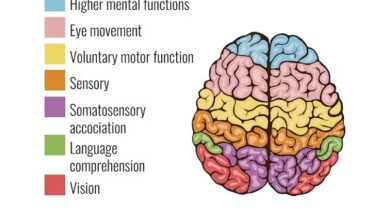Effective Photo Restoration: From Algorithms to Applications

Photographs are more than just images; they are windows to the past, capturing precious moments and preserving memories for future generations. Over time, these cherished photographs may fade, get damaged, or suffer from various imperfections due to age and handling. However, with technological advancements and image processing, photo restoration has become a powerful tool to revive these vintage snapshots and bring them back to life.
Photo Restoration
Photo restoration is rejuvenating and repairing old, damaged, or degraded photographs. The primary objective is to enhance the image’s visual quality while preserving its authenticity and historical value. Common issues in old photographs include fading, scratches, tears, blurriness, and missing parts.
Restoring these photographs presents unique challenges, requiring a delicate balance between enhancing the image and retaining its original character.
Algorithms for Photo Restoration
Photo restoration relies on various image processing algorithms to address issues and enhance image quality. As the demand for preserving visual memories grows, professional photo restoration services play a crucial role in reviving old and damaged photographs for personal and historical purposes. Some of the fundamental algorithms used in this domain include:
- Noise Reduction Techniques
Noise can significantly degrade the visual quality of a photo, especially in older film-based images. Various denoising algorithms, such as bilateral filtering, wavelet denoising, and non-local means, can reduce unwanted noise while preserving essential image details.
- Deblurring Methods
Blurry images can be caused by camera shake, poor focus, or motion blur. Deblurring algorithms aim to reverse these effects and enhance image sharpness. Restoration methods like Wiener deconvolution, blind deconvolution, and deep learning-based deblurring models have shown promising results in recovering lost details.
- Image Inpainting
When photographs have missing parts due to tears, scratches, or other damage, image inpainting algorithms can reconstruct the missing regions based on surrounding information. These algorithms utilize contextual information to fill in the gaps seamlessly.
- Colorization Algorithms
Colorization techniques can add vibrant colors to black-and-white photographs, breathing life into historical images. Deep learning models, particularly Generative Adversarial Networks (GANs), have demonstrated impressively accurate and realistic colorization capabilities.
Real-world Applications
Photo restoration finds numerous applications in various fields:
- Historic Photo Restoration
Preserving historical photographs is essential for safeguarding cultural heritage. Photo restoration allows archivists and historians to digitize and restore old photographs, ensuring their longevity and accessibility for future generations.
- Personal Photo Restoration
Families often possess old and cherished photographs that have undergone wear and tear over the years. Restoring these images brings back fond memories and allows families to reconnect with their history.
- Forensic Analysis
In forensic investigations, photo restoration can enhance low-quality images from surveillance cameras or crime scenes, helping law enforcement agencies gather crucial evidence.
- Entertainment Industry
Photo restoration techniques are also employed in the entertainment industry, where filmmakers and visual artists use them to bring historical accuracy to period films and documentaries.
Future Trends and Innovations
The future of photo restoration holds exciting prospects, as ongoing research and technological advancements promise to revolutionize the field. Technological advances have paved the way for specialized digital photo editing services, offering comprehensive solutions to enhance and transform images for various creative and professional needs. Here are some key trends and innovations we can expect:
- Pursuing excellence in photo restoration algorithms will yield more sophisticated and efficient methods. These algorithms will tackle a broader spectrum of restoration challenges, producing remarkable results with improved image quality and authenticity.
- A fusion of artificial intelligence algorithms with human expertise will drive the development of synergistic restoration techniques. We can achieve highly personalized and accurate restoration outcomes by combining human restorers’ intuition and creativity with AI’s computational prowess.
- As photo restoration becomes more mainstream, user-friendly software and applications will become readily accessible to the general public.
- Preserving historical photographs and archives will remain a critical aspect of photo restoration. Conservationists and historians will continue to benefit from advanced restoration techniques to digitize and safeguard cultural heritage for future generations.
- Advancements in hardware and software will lead to real-time photo restoration capabilities. Mobile devices will become equipped with on-device AI models, allowing users to restore images instantly without needing an internet connection.
- AI-driven restoration tools will increasingly be seen as aids for artistic expression rather than just technical instruments.
Conclusion
Effective photo restoration breathes new life into old and damaged photographs, allowing us to relive the past and cherish our visual history. Through the application of various algorithms and deep learning techniques, the field of photo restoration continues to evolve, providing powerful tools to preserve and enhance our visual memories.




